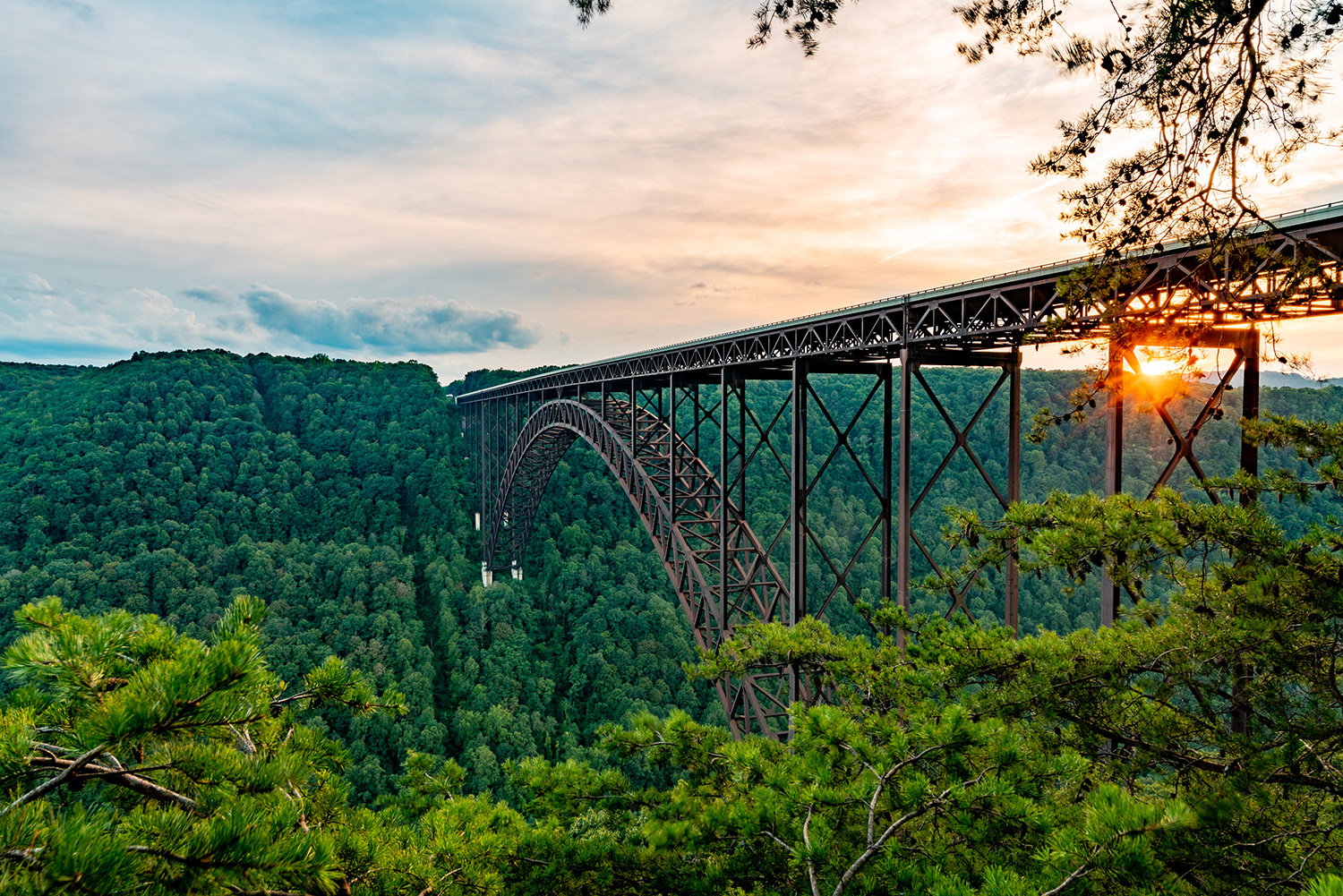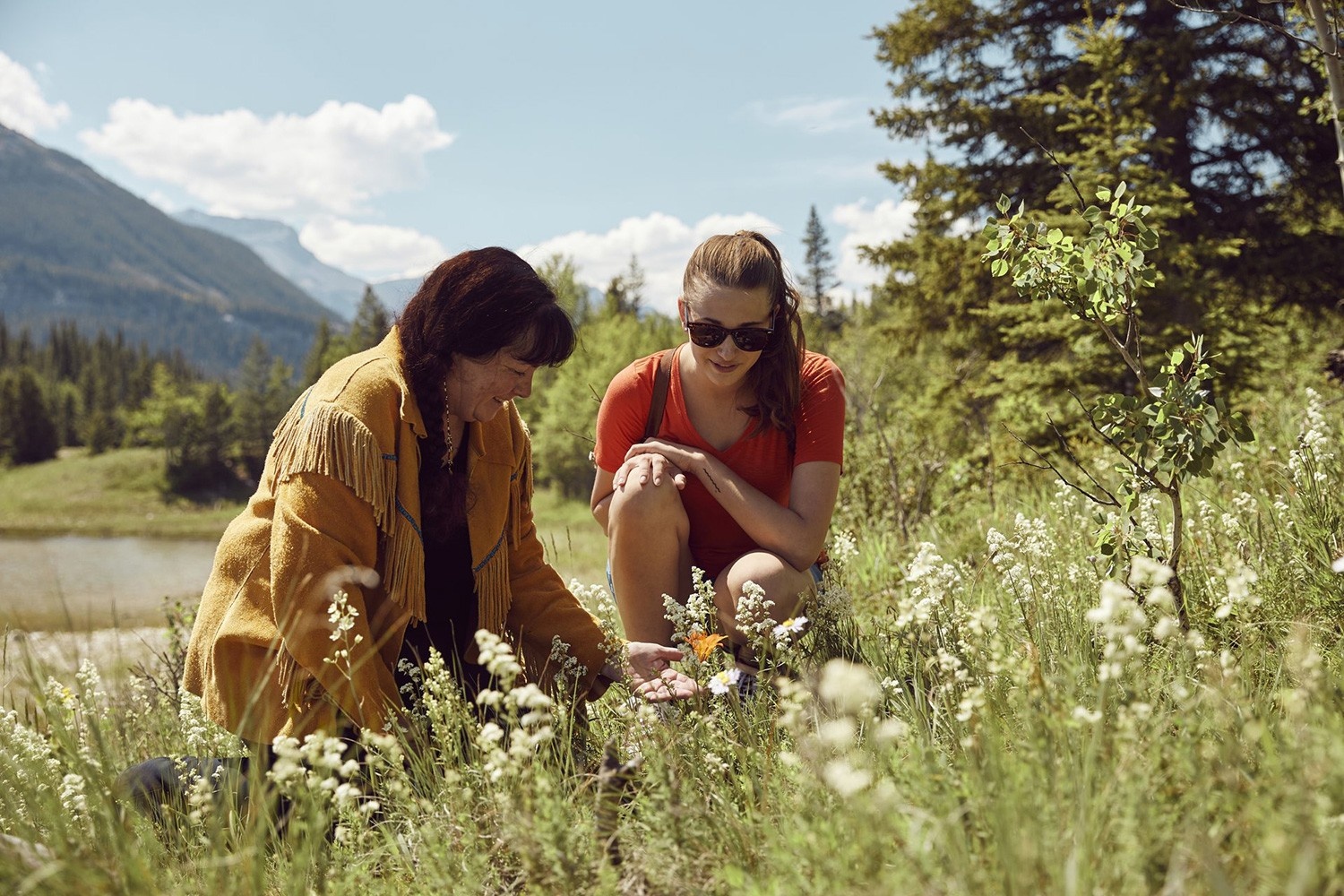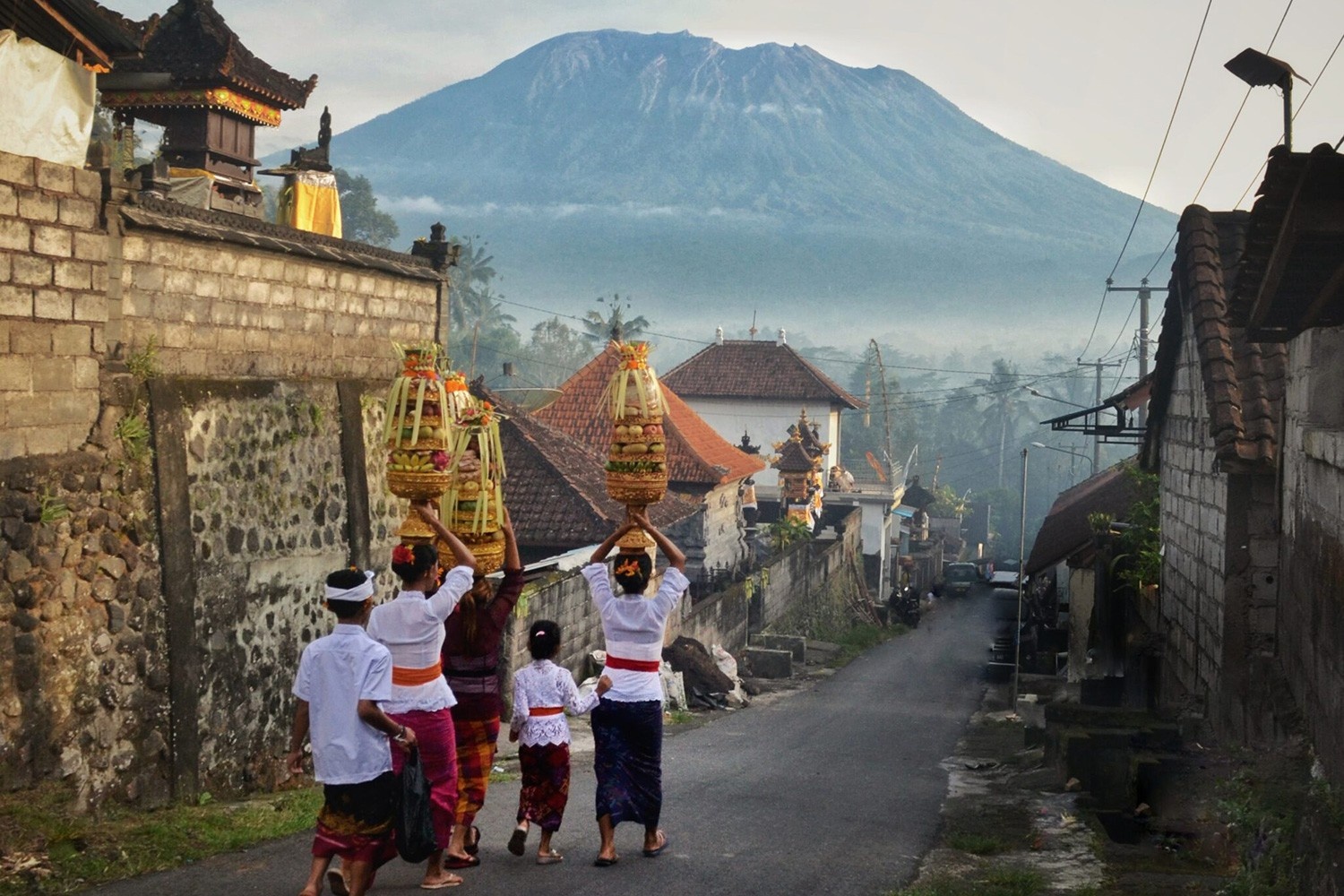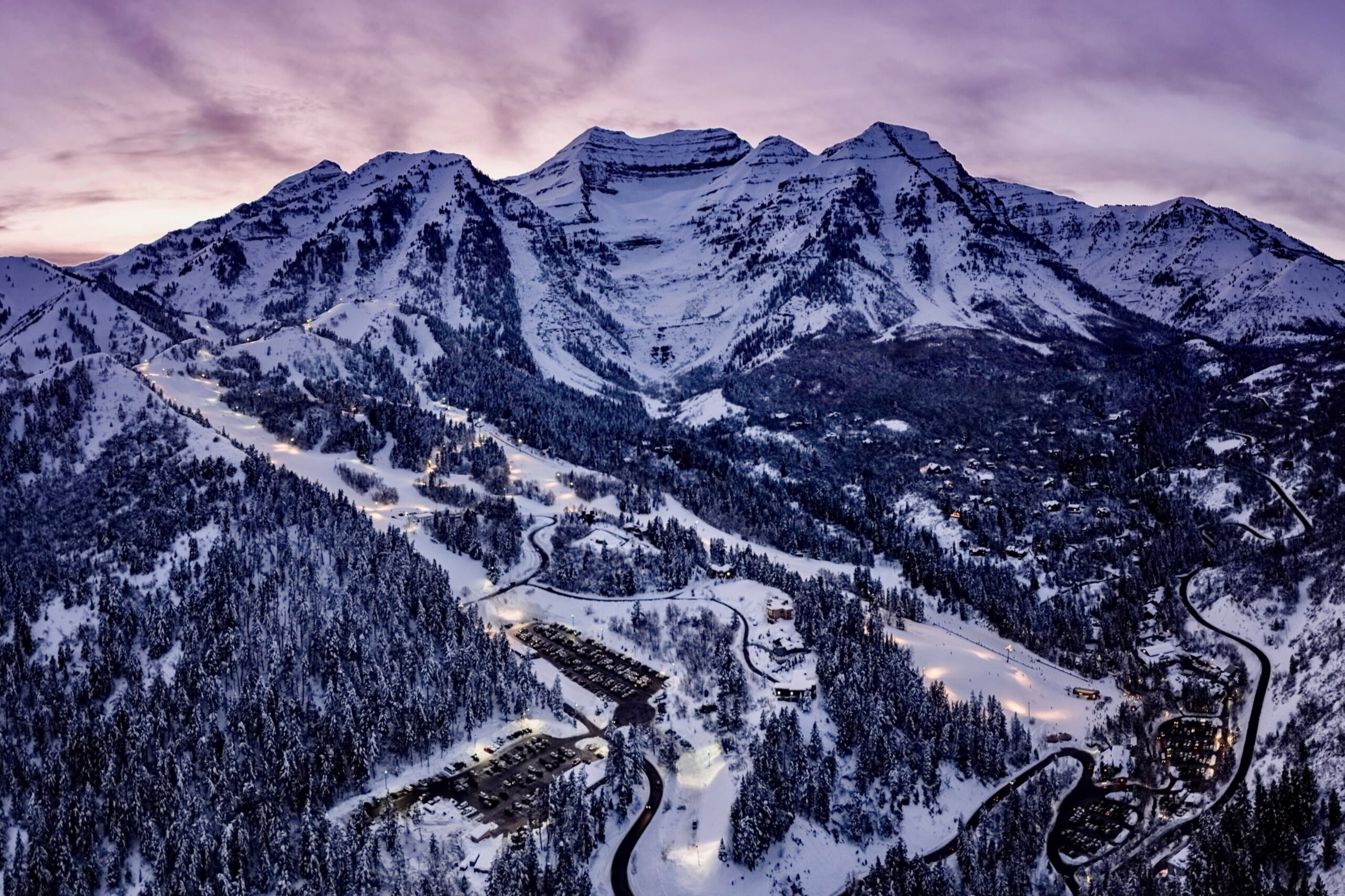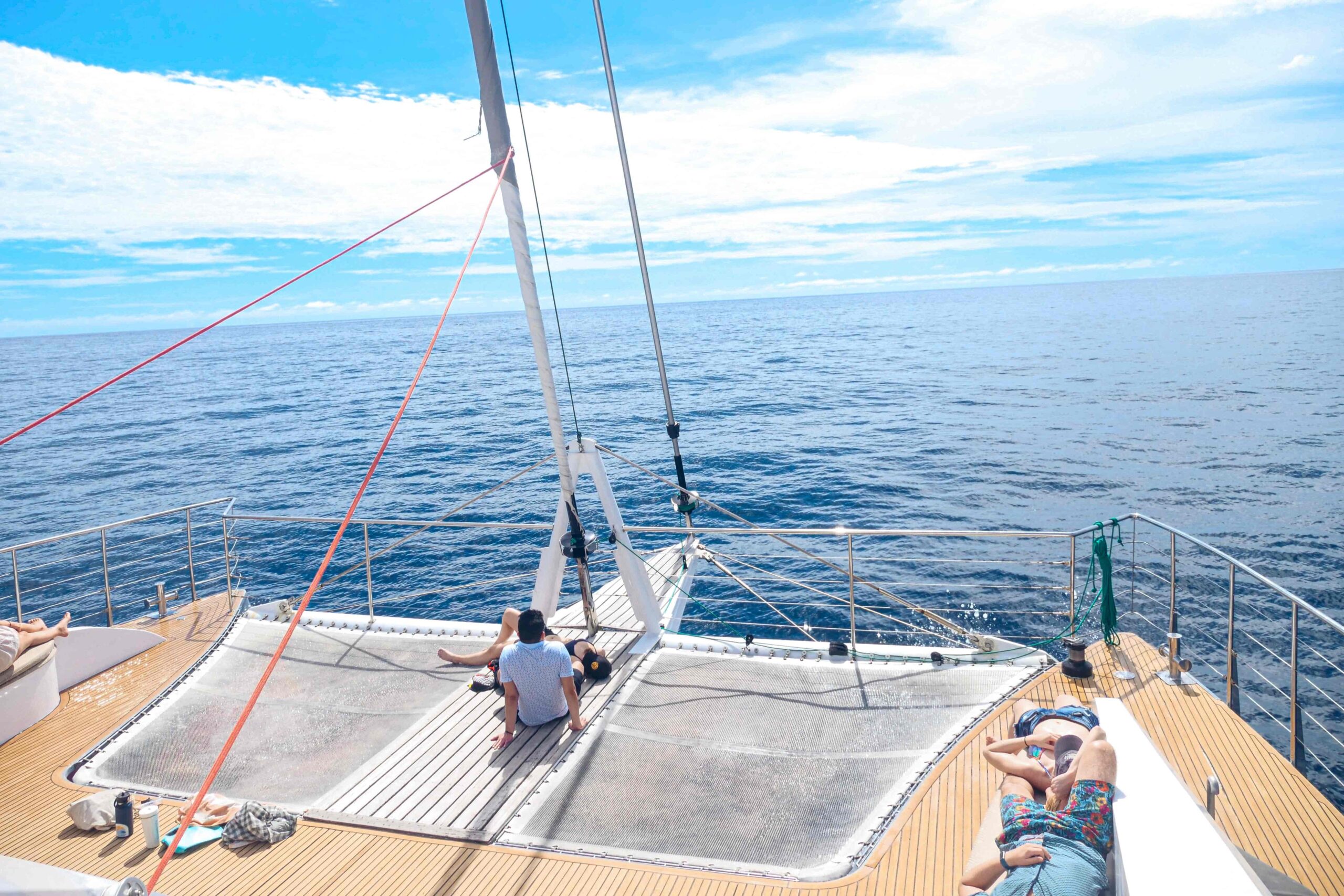NORTH STARS:
Heritage Value
Diversity & Inclusion
Carbon Footprint
“West Virginia gets an odd rap. The only three people that stopped asking me why I moved to West Virginia are the three people that have visited me.”
For better or worse, coal and other environmentally taxing industries fundamentally changed the landscape and people of the Appalachian region of the United States, one that extends across 13 states and over 200,000 square miles. It remains an area ripe with misconceptions about its history and people.
But thanks to tourism, especially in the outdoors industry, small communities are finding success outside of coal, creating new jobs and a sustainable economy. They’re also leaning into the past, not trying to ignore it, and teaching people about the music, crafts, and culture unique to this area. Because of the fairly recent creation of these tourism zones, there are still places that remain untouched by the masses.

Exploring new River Gorge National Park. Courtesy of West Virginia Department of Tourism
Southern West Virginia
The creation of New River Gorge National Park and Preserve in 2020 put the region of West Virginia on the map for many people, especially within the nine-county region around it. But the outdoors community has long sought out the area’s world-class whitewater rafting and nearly 100 miles of trails across 70,000 acres.
Bridge Days bring out base jumpers and curious onlookers as the brave leap from the famous bridge. The park itself, along with two nearby recreation areas, are responsible for nearly 2 million annual visitors and an over 96 million dollar economic impact locally, and counting.
But before it was protected land, it was deep coal country that supported the industry and its adjacent businesses for over 60 years. Even now, you’ll find abandoned mines and industrial remains of the past deep in the forest like the Kaymoor mine site, only accessible by hiking trail, and Nuttallburg, at one point owned by Henry Ford’s company. There’s also Thurmond, a boomtown and depot that came to prominence when the Chesapeake & Ohio Railroad arrived in 1873 to transport coal out of the region.
These days, Fayetteville is the primary entrance to the national park, with restaurants and shops popular with the resident rafting guide crowd.
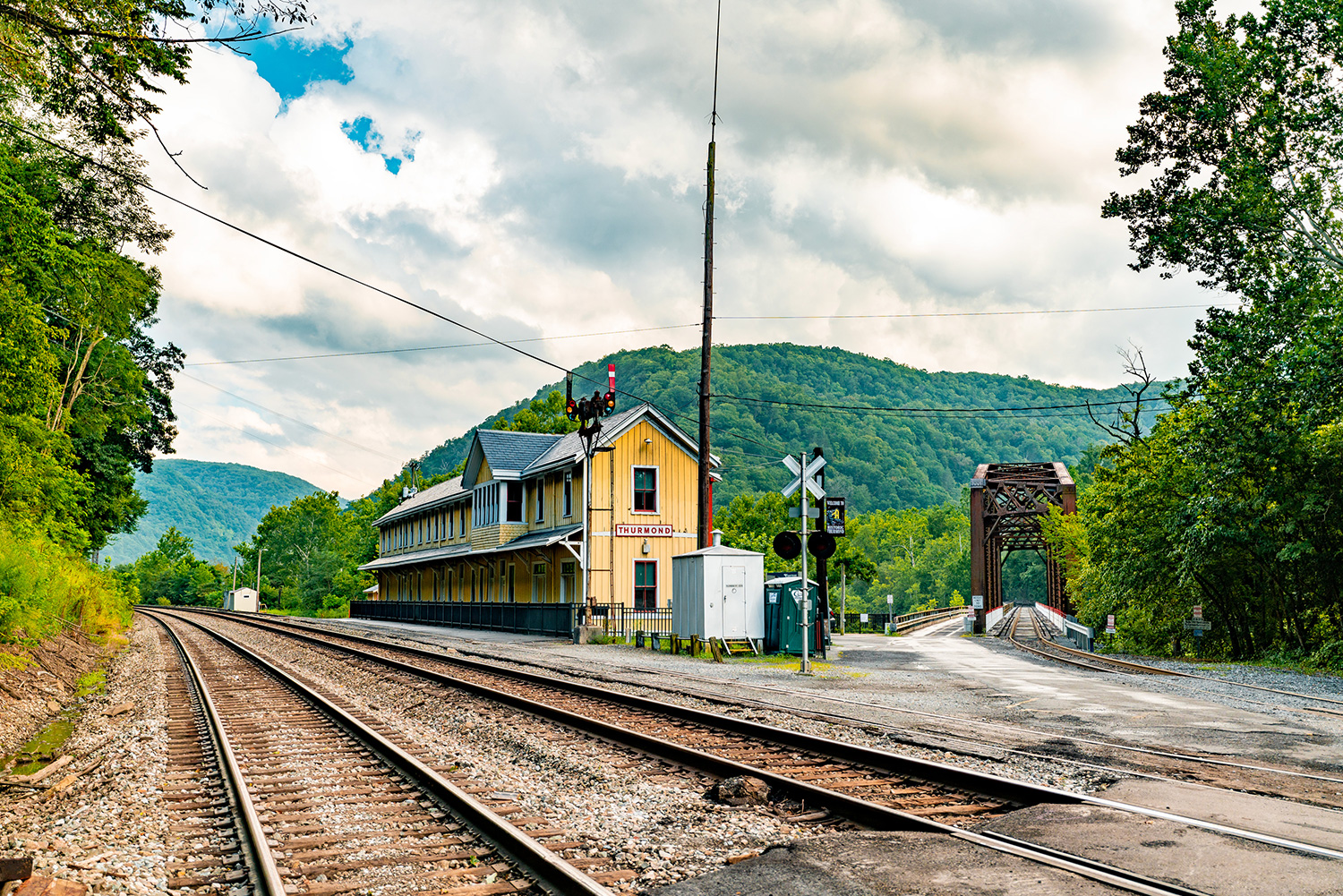
The historic Thurmond depot. Courtesy of West Virginia Department of Tourism.
“The outdoor industry has been here for a long time. That’s what actually drew me to Fayetteville back in 2009,” says Craig Reger, owner of Range Finder Coffee in Fayetteville. “The more you dig into this community, the more you see all these cool little eccentricities that kind of just link us all together.”
White Sulphur Springs is another nearby town that grew to prominence in the shadow of the Greenbrier, built by the Chesapeake and Ohio Railroad in 1913 for its passengers.
The luxury hotel is known for its Dorothy Draper-designed interiors and underground bunker created to protect world leaders from a nuclear winter, only declassified in 1995. The town was named for the mineral-rich springs believed to have healing properties. Nearby, The Schoolhouse Hotel opened in 2022 in the community’s former high school and, thanks to the Disability Opportunity Fund, became the world’s first completely accessible hotel, allowing even more people to experience the region.
“West Virginia gets an odd rap. The only three people that stopped asking me why I moved to West Virginia are the three people that have visited me,” adds Reger. “You’ve got to just put your eyes on it. You have to ignore all that stuff you hear and see and just come here and see it for yourself.”
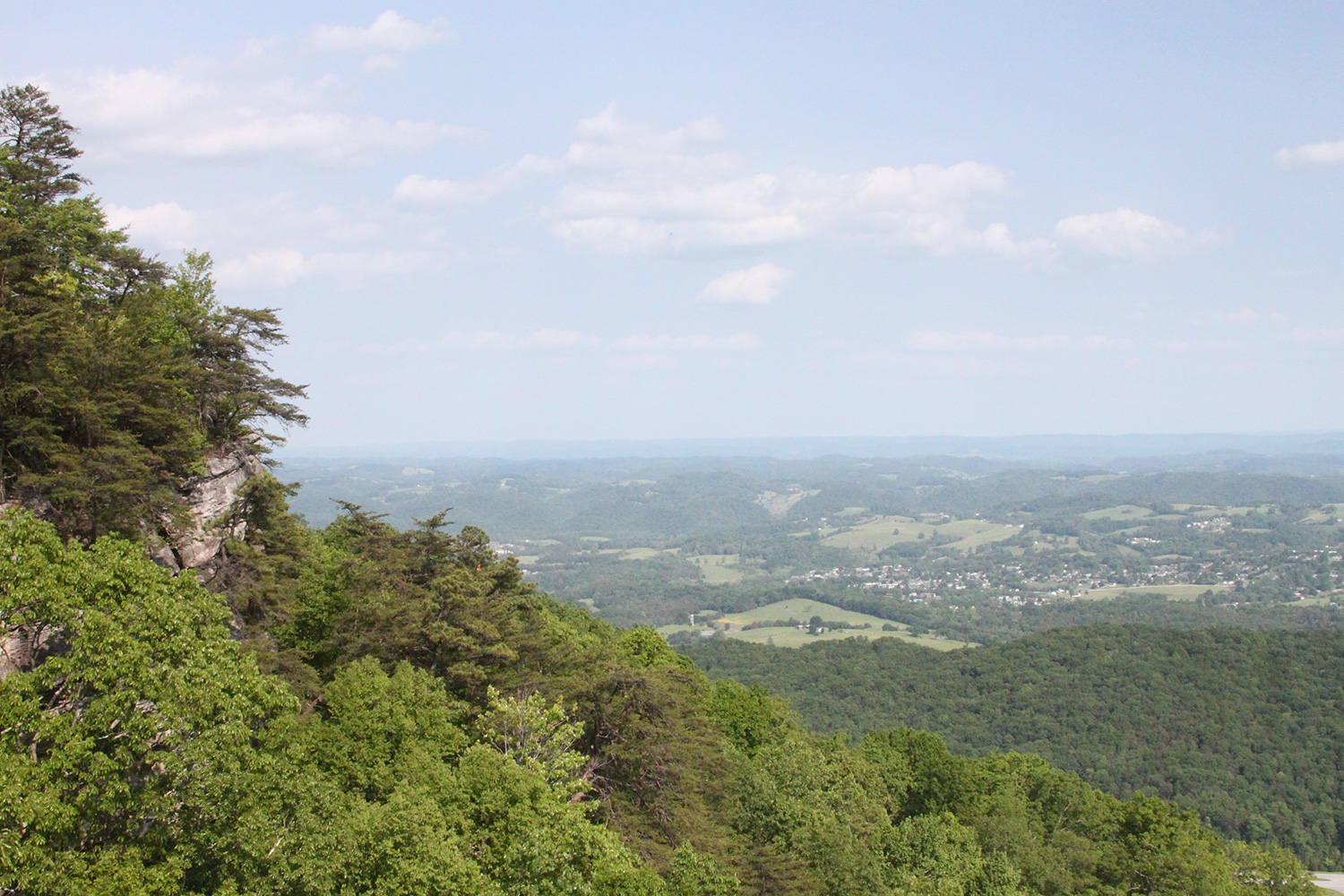
The historic Thurmond depot. Courtesy of West Virginia Department of Tourism.
Kentucky Wildlands
Before a 2021 initiative, the 41-county region in southeast Kentucky now known as the Kentucky Wildlands had little in terms of tourism. The historic communities including Corbin, Harlan, and Somerset relied previously on the coal industry, but it continued to decrease by 80 percent in revenue in the past decade.
The tourism department sought to replace the economic development of one industry with another, bringing in people from within the state and beyond to experience the bounty of natural wonders, including 800 waterfalls and one of the few places in the world to spot a “moonbow,” a rainbow created by a reflection from the moon.
The state parks and Red River Gorge area are especially popular with cave tours and rock climbing, providing a great alternative to the often-crowded national parks. New experiences have also popped up on former coal land. Southeast Mountain Guides was the first company in the United States to offer a via ferrata, a climbing route on rock faces with iron rungs to hang onto. After a day of adventures, you’ll find glamping sites featuring safari tents, treehouses, yurts, and geodesic domes with gorge views.
Several communities also lean into the history of the region. Many of the settlement schools, which served the community members through teaching essential trades and Appalachian crafts, are now open to visitors, including the still-operational Pine Mountain Settlement School and Hindman Settlement School. Another former school now operates as the Benham Schoolhouse Inn, which continued to educate children in the company town until 1992. The town of Benham is also home to the Kentucky Coal Museum, located in the coal company’s former commissary with exhibits on the “coal miner’s daughter” Loretta Lynn and the show “Justified,” set in nearby Harlan. Portal No. 31 Coal mine replicates the experience of the thousands of miners who worked for the United States Coal and Coke Company. The abandoned Blue Heron town is an outdoor museum that operated as the Stearns Coal and Lumber Company mine until the 1960s.

View of the Kentucky Wildlands. Courtesy of Caroline Eubanks. Sunset over Cumberland Gap. Courtesy of Pineapple Public Relations.
Southwest Virginia
The rocky ranges of Southwest Virginia include towns untouched by time, with a rich culture in music, including bluegrass and “old time,” and handmade crafts. It’s also one of the most coal-dependent areas in the nation. But tourism has brought change.
In Saltville, population 1,800 or so, salt pulled from prehistoric deposits was mined to preserve meat during the Civil War. In later years, it became a company town for Mathieson Chemical, which used the salt to create rocket fuel and sodium cyanide until its closure in 1972 following new EPA regulations. The mercury-contaminated North Fork Holston River was declared a Superfund site.
But after extensive cleanup efforts, the river now attracts fly fishermen and birders from around the country. The brackish Well Fields, which bring in shore birds not usually found this far east, now form part of a new birding trail.
The Appalachian Trail is a longtime success story for the small towns it passes through since its completion in 1937. Places like Marion benefit from seasonal hikers, who can learn about the traditions of the area at the Wayne C. Henderson School of Appalachian Art. It also runs through Tazewell County, part of the Virginia Coal Heritage Trail, where visitors can tour the Pocahontas Exhibition Mine, which covers the community’s century-old mining history.
In Abingdon, generations of people have come to see performances at the famed Barter Theatre, which started during the Great Depression as a way that patrons could “barter” for admission. Even from the beginning, the theater’s founder would award a prize to those who traveled the furthest, which continues today, including past guests from New Zealand, China, and the Phillippines. The theater also brings in a team of actors, producers, and directors every season.
“I came [to Southwest Virginia] to work for Barter as a summer acting intern right out of college. I was supposed to be here for three months but I was hooked,” says Katy Brown, the theatre’s Producing Artistic Director. “The beauty and authenticity of Appalachia are unlike anywhere else in the world. We have actors who join our casts from around the country, and when they leave, they say they dream about it for years. There’s something about these mountains and the people who live here that feels like home in a way that is both immediately palpable and hard to describe to someone who’s never experienced it.”

Caroline Eubanks is an Atlanta, Georgia-based Lowell Thomas award-winning writer and author of This Is My South: The Essential Travel Guide to the Southern States and A Boozy History of Atlanta: People, Places & Drinks that Made a City. Her work has appeared in Lonely Planet, the Chicago Tribune, Architectural Digest, the Washington Post, and VinePair. Follow her travels in the South and beyond (plus lots of dog photos) on Instagram at @cairinthecity and through her website.
North Stars: Carbon Footprint, Diversity and Inclusion, Heritage Value


